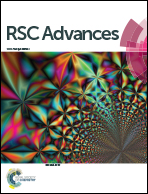A silver-promoted solid-phase guanidylation process enables the first total synthesis of stictamide A†
Abstract
The first total synthesis of stictamide A, a structurally unique peptide with a statine motif and a N-prenyl modified arginine in the side chain, is disclosed. The requisite statine was achieved via stereoselective hydrogenation of a functionalized ketone. The N-prenyl modified arginine was constructed by a novel silver-promoted solid-phase strategy for the first time. This synthetic method can be generally applied to the efficient synthesis of peptides containing statine and/or arginine N-alkylation groups.


 Please wait while we load your content...
Please wait while we load your content...